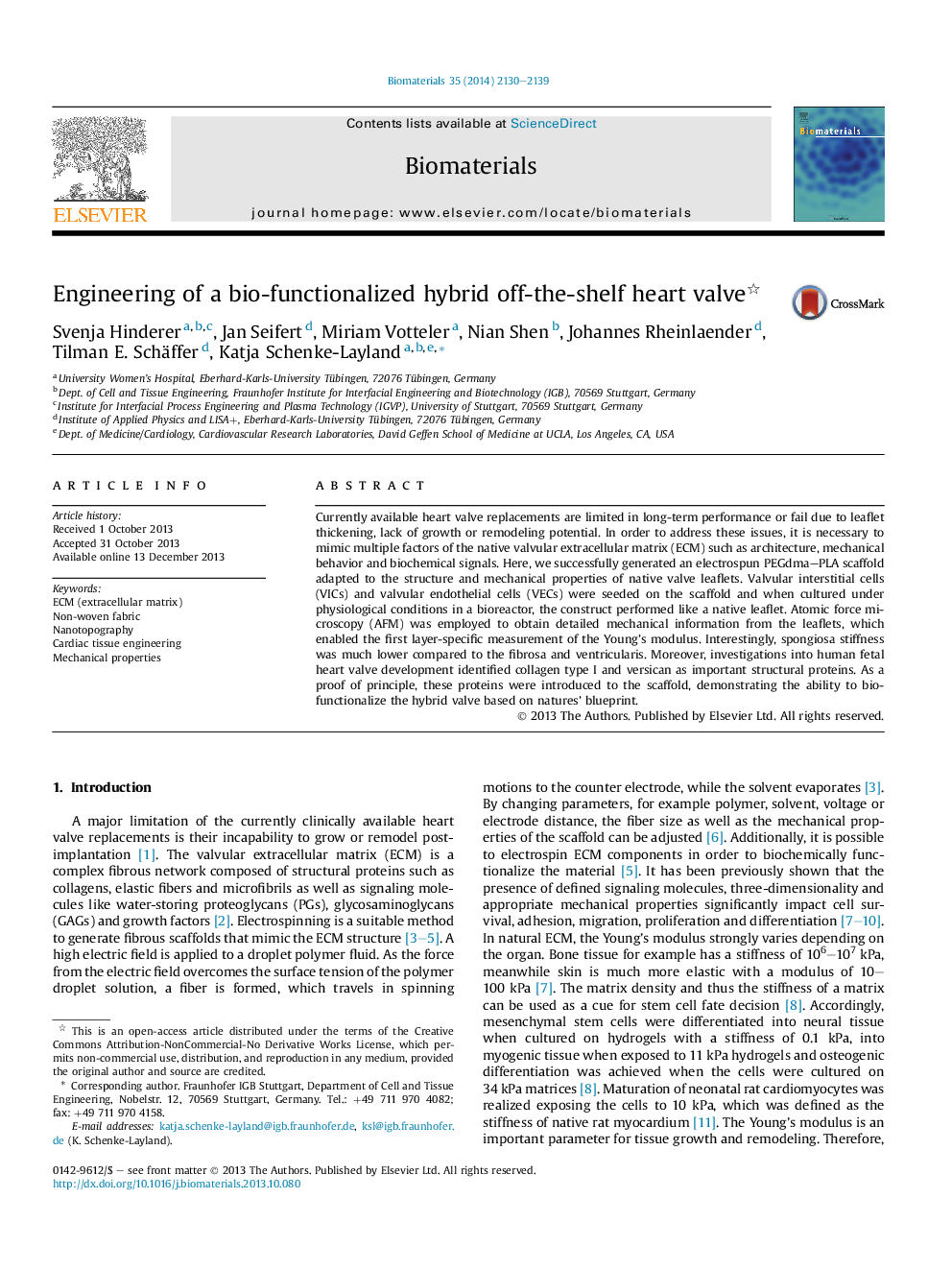| Article ID | Journal | Published Year | Pages | File Type |
|---|---|---|---|---|
| 10228359 | Biomaterials | 2014 | 10 Pages |
Abstract
Currently available heart valve replacements are limited in long-term performance or fail due to leaflet thickening, lack of growth or remodeling potential. In order to address these issues, it is necessary to mimic multiple factors of the native valvular extracellular matrix (ECM) such as architecture, mechanical behavior and biochemical signals. Here, we successfully generated an electrospun PEGdma-PLA scaffold adapted to the structure and mechanical properties of native valve leaflets. Valvular interstitial cells (VICs) and valvular endothelial cells (VECs) were seeded on the scaffold and when cultured under physiological conditions in a bioreactor, the construct performed like a native leaflet. Atomic force microscopy (AFM) was employed to obtain detailed mechanical information from the leaflets, which enabled the first layer-specific measurement of the Young's modulus. Interestingly, spongiosa stiffness was much lower compared to the fibrosa and ventricularis. Moreover, investigations into human fetal heart valve development identified collagen type I and versican as important structural proteins. As a proof of principle, these proteins were introduced to the scaffold, demonstrating the ability to bio-functionalize the hybrid valve based on natures' blueprint.
Keywords
Related Topics
Physical Sciences and Engineering
Chemical Engineering
Bioengineering
Authors
Svenja Hinderer, Jan Seifert, Miriam Votteler, Nian Shen, Johannes Rheinlaender, Tilman E. Schäffer, Katja Schenke-Layland,
